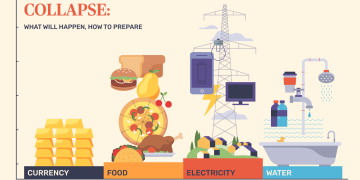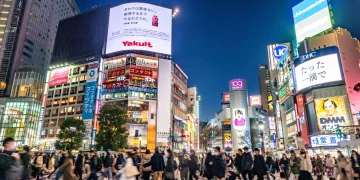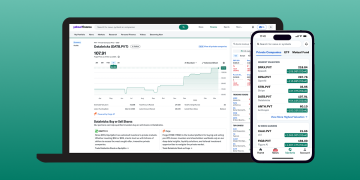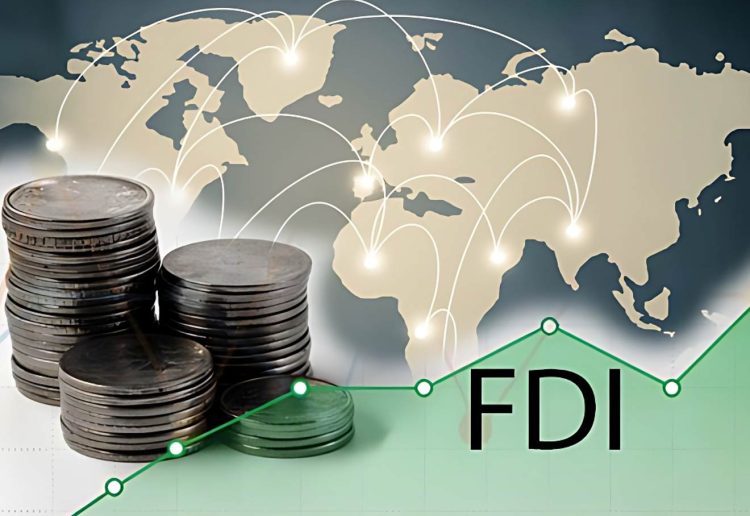Introduction
The Asia-Pacific region, home to some of the world’s fastest-growing economies, offers a wealth of investment opportunities for global investors. Countries such as Vietnam, the Philippines, Indonesia, and India have seen rapid growth driven by industrialization, a youthful population, and expanding middle class. These emerging markets have become a focal point for foreign direct investment (FDI), attracting businesses seeking to capitalize on the region’s economic dynamism. However, with these opportunities come significant risks, including geopolitical tensions, inflation, and regulatory challenges. This article provides an in-depth look at the emerging economies in the Asia-Pacific, the factors driving their growth, the sectors drawing the most investment, and the risks that investors must consider.
1. Overview of Emerging Markets in the Region
The Asia-Pacific region is home to some of the world’s most exciting emerging markets, each with its own set of opportunities and challenges. Countries like Vietnam, the Philippines, and Indonesia have been at the forefront of growth in recent years, benefiting from both domestic factors and external shifts in global trade dynamics.
Vietnam
Vietnam has emerged as one of the most attractive investment destinations in the Asia-Pacific. The country’s rapid industrialization, combined with a favorable demographic profile, has created a robust manufacturing base. Vietnam’s young and increasingly urbanized population has driven demand for consumer goods, services, and digital products. The government has implemented pro-business policies, such as tax incentives for foreign investors, and has signed trade agreements with the European Union, the United States, and other countries, opening up new markets for Vietnamese goods and services.
Vietnam’s status as a manufacturing hub has been further strengthened by the trade tensions between China and the U.S. Many companies have opted to move production from China to Vietnam to avoid tariffs, positioning the country as a key player in the global supply chain.
The Philippines
The Philippines is another key player in the emerging economies of the Asia-Pacific. With a large and growing population, the country offers a huge domestic market for products and services. The Philippines has become a major outsourcing destination, particularly for business process outsourcing (BPO) services such as call centers and IT support. The country has also seen growth in its manufacturing and tourism sectors.
Economic reforms, a favorable business climate, and a young, educated workforce have helped attract foreign investment in the Philippines. The government has been focusing on infrastructure development through its “Build, Build, Build” program, improving transportation and logistics systems, which has boosted investor confidence in the country.
Indonesia
Indonesia, Southeast Asia’s largest economy, has experienced steady economic growth in recent years. The country’s rich natural resources, expanding middle class, and growing infrastructure investments have made it an attractive destination for foreign investors. Despite challenges such as regulatory inefficiencies and corruption, Indonesia remains a key player in the Asia-Pacific, offering significant potential for growth.
India
India, while often considered part of South Asia, is a vital player in the Asia-Pacific economy. The country’s large and youthful population, expanding digital economy, and growing middle class make it a key investment destination. The Indian government’s push to modernize infrastructure and its growing tech sector have also made India a major player in the global market.
2. Growth Drivers in Emerging Asia-Pacific Economies
Several factors are driving the growth of emerging economies in the Asia-Pacific. These drivers include demographic trends, manufacturing capabilities, and digital transformation, all of which are making the region a hotbed for investment.
Demographics and Urbanization
Asia-Pacific’s youthful population is one of the key drivers of economic growth. Countries like Vietnam, the Philippines, and Indonesia have large young populations that are increasingly urbanized. Urbanization creates demand for housing, infrastructure, and consumer goods, all of which stimulate economic activity. As a result, companies in sectors such as real estate, retail, and consumer electronics are investing heavily in these markets.
Manufacturing
Many emerging economies in the Asia-Pacific are capitalizing on their competitive advantage in manufacturing. Low labor costs, combined with favorable trade agreements, make these countries attractive for companies looking to establish production facilities. Vietnam, for instance, has become a key location for electronics, textiles, and footwear manufacturing, while Indonesia and the Philippines are seeing growth in sectors like automotive and consumer goods.
Digital Transformation
The rapid adoption of digital technologies is another key growth driver in the Asia-Pacific. E-commerce, fintech, and digital banking are growing rapidly in countries like Vietnam and the Philippines. The increasing use of smartphones and the expansion of internet access have created new opportunities for digital-first companies. India, in particular, has seen explosive growth in its tech sector, with the country being home to a growing number of unicorns in areas like e-commerce, fintech, and edtech.

3. Risks in Emerging Asia-Pacific Markets
While the potential for growth in these emerging economies is substantial, there are several risks that investors must consider when entering the region. Geopolitical tensions, inflation, and regulatory challenges can all affect investment outcomes in Asia-Pacific markets.
Geopolitical Tensions
Geopolitical tensions in the Asia-Pacific can have a significant impact on economic stability. For instance, the ongoing territorial disputes in the South China Sea involve several countries in the region, including China, Vietnam, the Philippines, and Malaysia. These tensions can disrupt trade routes, lead to regulatory changes, or result in conflict, which could adversely affect economic growth and investor confidence.
Trade wars, such as the U.S.-China trade war, also pose risks to emerging markets in Asia-Pacific. Countries that are heavily dependent on exports, like Vietnam and Indonesia, may be vulnerable to changes in global trade policies, tariffs, and sanctions.
Inflation
Inflation is another risk that investors need to consider. While inflation has been relatively controlled in most parts of the region, rising commodity prices, supply chain disruptions, and the effects of global economic policies could lead to higher inflation in some economies. High inflation can erode the value of investments, especially in fixed-income securities or cash-denominated assets.
Regulatory Challenges
Regulatory risks are prevalent in many emerging markets. Countries in the Asia-Pacific often have complex regulatory environments, where policies can change rapidly or be enforced inconsistently. For example, Indonesia has faced challenges with its business regulatory framework, and the Philippines’ legal system has been criticized for inefficiency. These issues can create uncertainty for investors and complicate the process of doing business in these countries.
4. Top Sectors Attracting Foreign Direct Investment
Foreign direct investment in Asia-Pacific emerging markets is primarily concentrated in sectors that offer high growth potential. Some of the key sectors attracting investment include:
Manufacturing
As mentioned earlier, manufacturing remains a cornerstone of economic development in the region. Sectors like electronics, automotive, textiles, and consumer goods are seeing significant foreign investment. Countries like Vietnam and Indonesia have become major players in global supply chains, attracting foreign manufacturers seeking to reduce costs and diversify production.
Fintech and Digital Payments
The growth of digital financial services has been one of the most exciting developments in the region. In countries like India, the Philippines, and Vietnam, fintech startups are rapidly innovating and attracting both venture capital and institutional investment. Digital payment platforms, mobile wallets, and peer-to-peer lending services are gaining traction, supported by increased internet penetration and smartphone adoption.
Renewable Energy
As global attention shifts toward sustainability, renewable energy has become an attractive sector for investment in emerging economies. The Asia-Pacific region, with its high demand for energy, is investing in solar, wind, and hydropower. Countries like India and Vietnam have set ambitious renewable energy targets, attracting international investors keen on capitalizing on the green energy revolution.
Consumer Goods and Retail
With rising incomes and urbanization, the consumer goods and retail sectors in Asia-Pacific are thriving. As the middle class expands, there is increasing demand for quality products in sectors like food and beverages, electronics, and fashion. Retail companies, both local and international, are rapidly expanding their presence in these emerging markets, drawn by the growing purchasing power of consumers.
5. Conclusion
Emerging economies in the Asia-Pacific region, such as Vietnam, the Philippines, and Indonesia, represent a new frontier for investment, offering substantial growth opportunities. Demographics, manufacturing, and digital transformation are key drivers of this growth, while risks such as geopolitical tensions, inflation, and regulatory hurdles remain important considerations for investors. By focusing on sectors like manufacturing, fintech, renewable energy, and consumer goods, foreign investors can capitalize on the region’s growth while mitigating the associated risks.
As the region continues to evolve, the Asia-Pacific’s emerging markets are likely to play an increasingly pivotal role in the global economy, offering a wealth of opportunities for savvy investors.





























